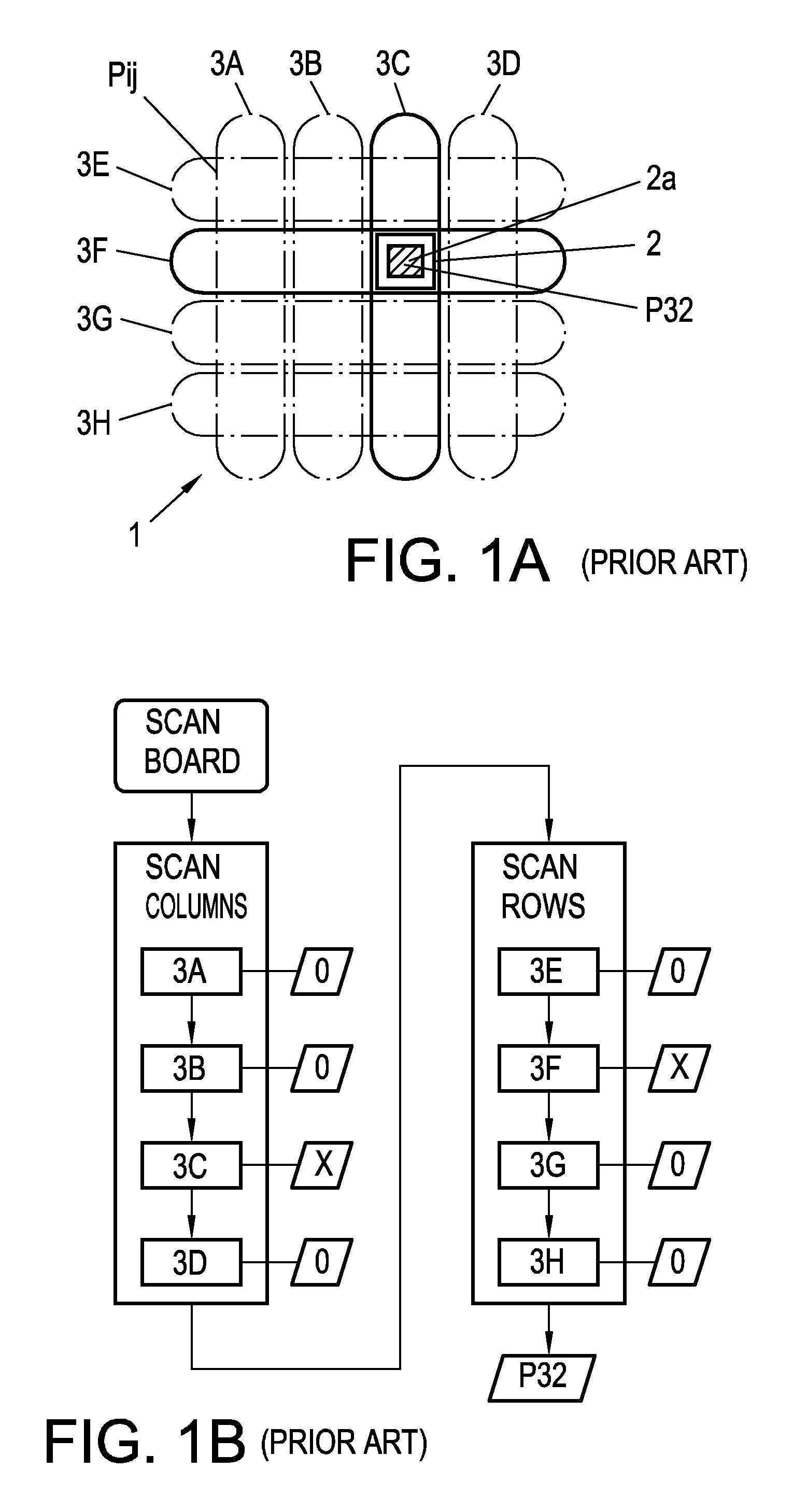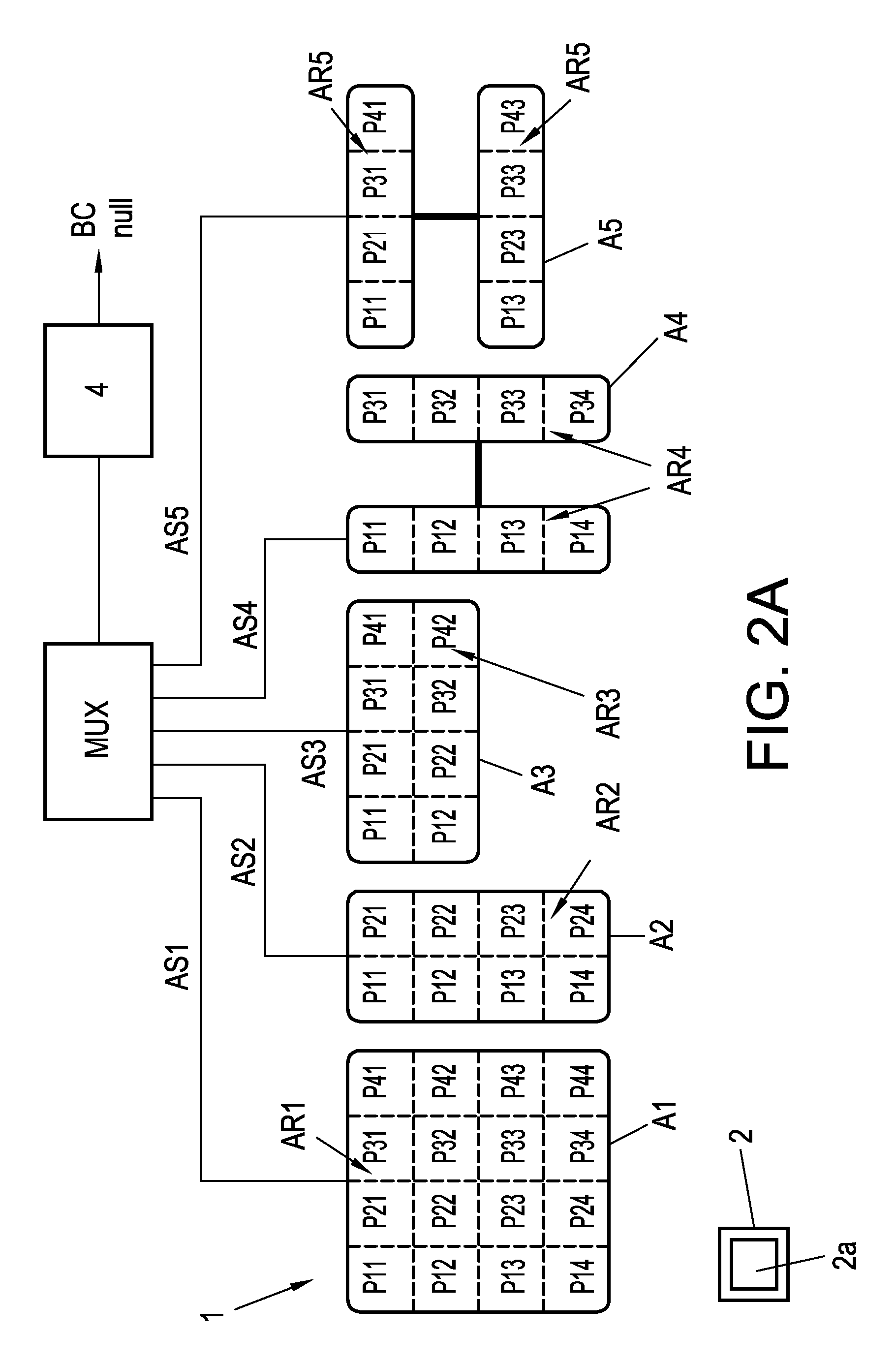System for Sensing a Physical Property in a Plurality of Scanning Positions
a technology of scanning position and physical property, applied in the field of system for sensing physical property, can solve the problems of increasing the production cost of the known system, prohibiting the production cost, and prohibiting the production cost, and achieves the effect of reducing the amount of wiring of the sensing system, high resolution, and quick determination
- Summary
- Abstract
- Description
- Claims
- Application Information
AI Technical Summary
Benefits of technology
Problems solved by technology
Method used
Image
Examples
Embodiment Construction
[0041]FIG. 2A shows a game board 1 that is divided into sixteen scanning positions P11-P44 (generally Pcolumn-row) on which an object 2 with specific properties can be placed. The scanning positions P11-P44 are arranged in a matrix with four rows and four columns. The board 1 includes a sensing system according to the invention sensing for a predefined physical property. In the present embodiment, the sensing system is adapted as a system for localizing the object 2 that has the predefined physical property within one of the scanning positions P11-P44. For example, the object 2 may be configured as a token with a built-in RFID tag 2a. Each scanning position is identified by a unique binary position code BC (see FIG. 2B), as will be explained below. The system for localizing the object 2 comprises a plurality of sensors A1-A5, which in this embodiment are configured as antennas for reading the RFID tag 2a. Strictly speaking the sensors A1-A5 are configured as loop antennas having sen...
PUM
 Login to View More
Login to View More Abstract
Description
Claims
Application Information
 Login to View More
Login to View More - R&D
- Intellectual Property
- Life Sciences
- Materials
- Tech Scout
- Unparalleled Data Quality
- Higher Quality Content
- 60% Fewer Hallucinations
Browse by: Latest US Patents, China's latest patents, Technical Efficacy Thesaurus, Application Domain, Technology Topic, Popular Technical Reports.
© 2025 PatSnap. All rights reserved.Legal|Privacy policy|Modern Slavery Act Transparency Statement|Sitemap|About US| Contact US: help@patsnap.com



